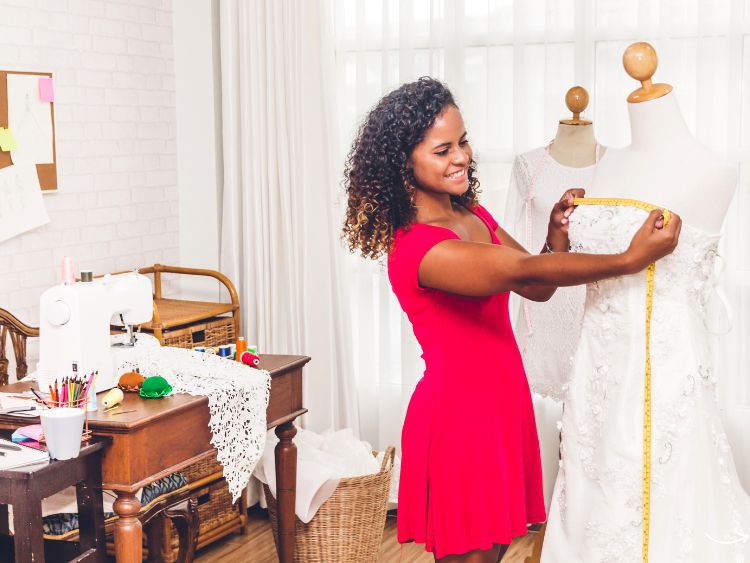Fashion design is not just about creating clothes; it’s about telling a story through fabric, texture, and color. If you’ve got a passion for fashion and an eye for detail, pursuing a master’s degree in fashion design could be your ticket to the top of the industry. But is it the right path for you? Let’s delve into what a fashion design master’s degree entails, the benefits it offers, and how it can transform your career.
Why Pursue a Fashion Design Master’s Degree?
The Need for Advanced Education
In the competitive world of fashion, a bachelor’s degree might get your foot in the door, but a master’s degree can open the gates to endless opportunities. It equips you with advanced skills, knowledge, and the professional network necessary to thrive in high-stakes environments.
Specialization and Expertise
A master’s degree allows you to specialize in areas like sustainable fashion, textile innovation, or fashion technology. This specialized knowledge makes you a valuable asset to employers and positions you as an expert in your chosen field.
Networking Opportunities
One of the unsung benefits of a master’s program is the network you build. You’ll connect with industry professionals, professors, and peers who can provide support, mentorship, and job opportunities long after you graduate.
Curriculum Overview
Core Subjects
Most fashion design master’s programs cover essential subjects such as:
- Advanced Design Techniques
- Fashion History and Theory
- Textile and Fabric Studies
- Sustainable Fashion Practices
- Fashion Marketing and Branding
Elective Courses
Electives allow you to tailor your education to your interests. Options might include:
- Fashion Technology and Innovation
- Costume Design for Film and Theater
- Digital Fashion Design
- Entrepreneurship in Fashion
Capstone Projects and Internships
Hands-on experience is a crucial component of these programs. You’ll often be required to complete a capstone project or an internship, giving you real-world experience and a chance to showcase your skills to potential employers.
Top Universities for Fashion Design Master’s Degrees
Parsons School of Design
Located in New York City, Parsons is renowned for its rigorous curriculum and connection to the fashion industry. Alumni include famous designers like Marc Jacobs and Tom Ford.
Central Saint Martins
This London-based college is a part of the University of the Arts London and is known for producing innovative and influential designers. Notable alumni include Alexander McQueen and Stella McCartney.
Royal College of Art
Another top institution in London, the Royal College of Art offers a unique blend of design and business education, preparing students for leadership roles in fashion.
Admission Requirements
Academic Background
Most programs require a bachelor’s degree in fashion design or a related field. However, some schools may accept candidates from diverse academic backgrounds if they demonstrate a strong portfolio and passion for fashion.
Portfolio
Your portfolio is your chance to shine. It should showcase your best work, highlight your creativity, and demonstrate your technical skills. Be sure to include a variety of pieces that reflect your unique style and vision.
Personal Statement
A compelling personal statement can set you apart from other applicants. Discuss your career goals, why you chose this field, and how a master’s degree will help you achieve your ambitions.
Career Opportunities After Graduation
Fashion Designer
With a master’s degree, you can pursue a career as a fashion designer, creating collections for established brands or launching your own label.
Fashion Merchandiser
Merchandisers play a crucial role in the retail side of fashion, analyzing trends, planning product ranges, and working closely with designers to ensure that collections are market-ready.
Textile Designer
Specializing in textile design allows you to focus on creating innovative fabrics and materials, which are essential components of fashion design.
Fashion Marketing and PR
If you have a flair for communication, a career in fashion marketing or public relations might be perfect for you. You’ll work on promoting brands, managing public images, and organizing fashion shows and events.
FAQs
What is the typical duration of a fashion design master’s degree? Most programs last between one and two years, depending on whether you study full-time or part-time.
Do I need a bachelor’s degree in fashion design to apply? While a related bachelor’s degree is often preferred, many programs consider applicants from diverse academic backgrounds if they have a strong portfolio and relevant experience.
Can I pursue a fashion design master’s degree online? Yes, several institutions offer online master’s programs in fashion design, providing flexibility for working professionals.
What kind of job can I get with a fashion design master’s degree? Graduates can pursue careers as fashion designers, merchandisers, textile designers, fashion marketers, and more.
Is work experience required for admission? Some programs prefer applicants with work experience in the fashion industry, but it is not always a strict requirement.
Conclusion
A fashion design master’s degree is a significant investment in your future, offering specialized knowledge, advanced skills, and invaluable networking opportunities. Whether you aspire to be a renowned designer or a key player in fashion marketing, this degree can help you achieve your dreams. So, are you ready to take the next step in your fashion career?
Authoritative Links
For more information on fashion design master’s degrees and related careers, check out these resources:
- https://www.parsons.edu
- https://www.arts.ac.uk/colleges/central-saint-martins
- https://www.rca.ac.uk
- https://www.fashionista.com
- https://www.businessoffashion.com
Pursuing a fashion design master’s degree could be your ticket to a thrilling and rewarding career in the ever-evolving world of fashion. Don’t just dream it—live it!
